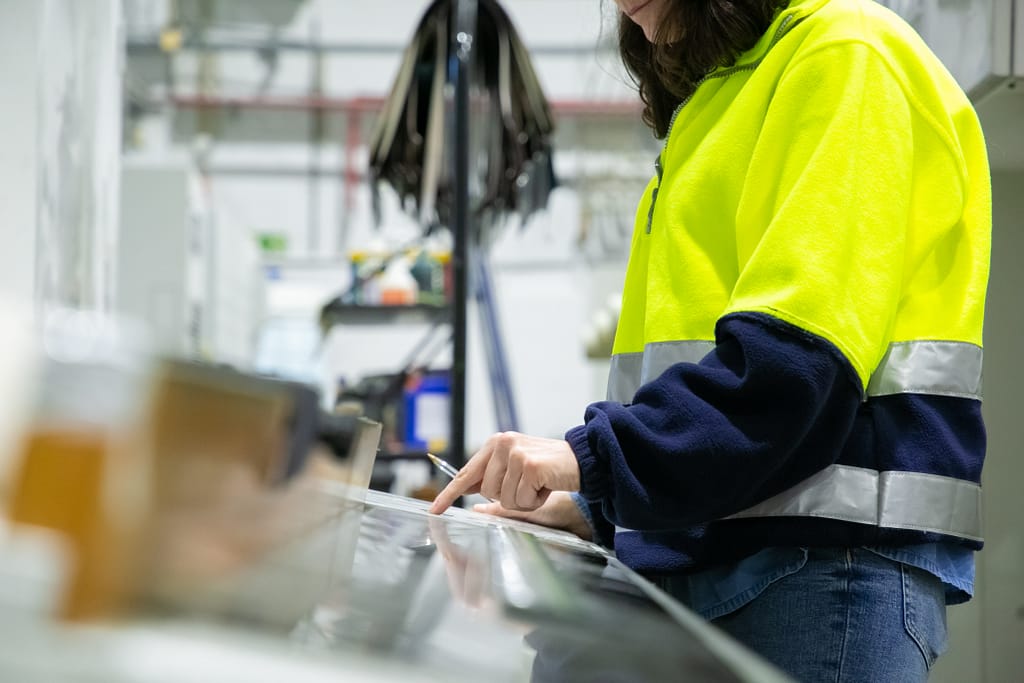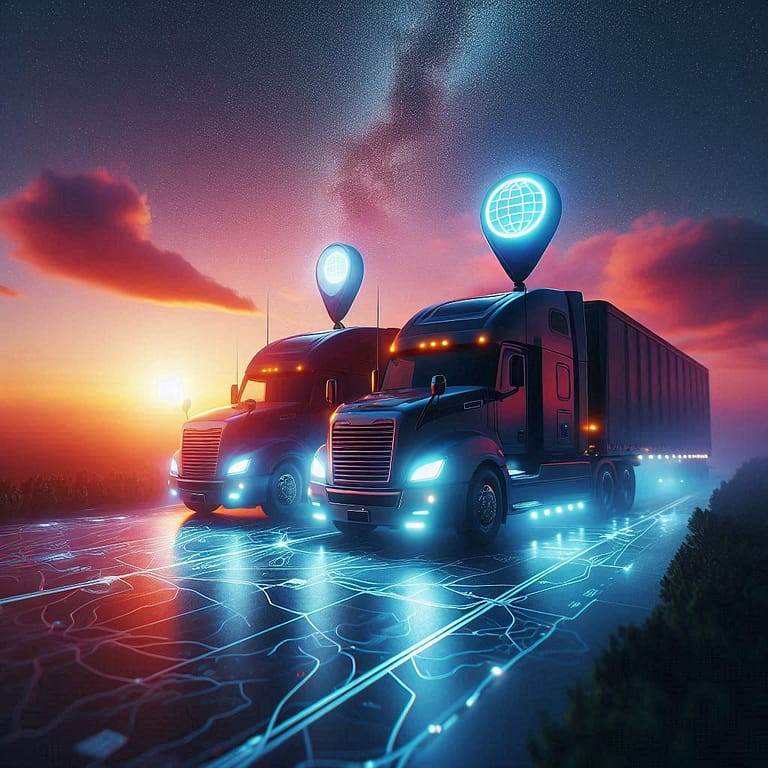In today’s tech-driven world, the Internet of Things (IoT) is revolutionizing how we interact with everyday objects. One of the most impactful innovations within this ecosystem is the rise of energy trackers. These intelligent devices provide real-time data on energy consumption, empowering businesses and individuals to make data-driven decisions that optimize energy use and reduce costs, which are especially important for complying with the CSRD standards in 2024.
This article dives deep into the world of IoT energy trackers – we’ll explore their functionalities, the undeniable benefits they offer, and the vast array of applications across different sectors, including Scope 3 reporting.
What do energy trackers do?
Energy trackers, often referred to as smart energy meters, serve as advanced tools for monitoring and recording energy consumption within households or commercial properties. Installed at key points such as the main electricity meter box or directly onto individual appliances, these devices employ various technologies to gather essential data.

Among these technologies are current transformers (CT clamps), which are non-invasive devices that attach around power cables to measure the electrical current flowing through circuits. Additionally, voltage sensors are employed to gauge voltage levels within the circuit, providing comprehensive insights into energy usage.
To transmit the collected data securely, these tracking devices make use of wireless communication protocols such as Wi-Fi, Bluetooth, or cellular networks. This facilitates the seamless transfer of information to a centralized hub or cloud platform, where the data is processed and analyzed. By leveraging these technologies, energy trackers enable users to access real-time or historical energy consumption information through user-friendly interfaces like mobile apps or web portals.
One of the primary functions of energy trackers is to empower users to gain insights into their energy consumption patterns. By visualizing data through intuitive interfaces, individuals can identify areas of high energy usage and make informed decisions to optimize their energy efficiency. Moreover, these devices facilitate the tracking of changes in energy consumption over time, allowing users to monitor the effectiveness of energy-saving measures or lifestyle adjustments.
In essence, energy trackers play a crucial role in promoting energy awareness and facilitating energy management. By providing users with actionable insights and real-time data, these devices empower individuals and businesses to make informed choices that contribute to energy conservation and cost savings – leading to broader infrastructure efforts toward building smarter and more sustainable communities.
Why do energy trackers matter for businesses?
In the dynamic landscape of energy management, the advent of energy trackers stands as a pivotal advancement, offering a multitude of benefits to individuals, businesses, and organizations alike, such as:
- Enhanced Visibility and Control: Energy trackers provide granular insights into energy consumption, empowering users to pinpoint exactly where and how energy is being used. This newfound visibility allows for informed decision-making, enabling users to prioritize energy-saving measures.
- Cost Reduction: By identifying areas of excessive energy use, users can implement targeted strategies to reduce consumption. This can translate to significant cost savings on electricity bills, especially for businesses with high energy demands.
- Improved Sustainability: Energy trackers promote eco-conscious practices by highlighting wasteful energy consumption. This encourages users to adopt sustainable habits, ultimately contributing to a reduced carbon footprint.
- Predictive Maintenance: Advanced energy trackers can analyze data trends to predict potential equipment failures. This proactive approach allows for preventative maintenance, minimizing downtime and associated repair costs.
- Streamlined Energy Management: For businesses and organizations managing large facilities with numerous appliances, energy trackers provide centralized control over energy consumption. This facilitates efficient energy management across the entire infrastructure.
Where they shine

- Smart Homes: Energy trackers empower homeowners to monitor the electricity usage of individual appliances, lighting systems, and HVAC units. This allows for adjustments to optimize energy use and reduce utility bills.
- Commercial Buildings: In office buildings, energy trackers provide valuable insights into energy consumption patterns across different floors and departments. This facilitates targeted conservation strategies and optimized energy budgeting.
- Industrial Facilities: Manufacturing plants often have high energy requirements. Energy trackers can help identify areas of energy waste in machinery and production processes, leading to significant cost savings.
- Smart Grid Management: Energy trackers play a crucial role in smart grids, a network of interconnected energy infrastructure. By monitoring energy consumption patterns across a large geographical area, utilities can optimize power distribution, improve grid reliability, and integrate renewable energy sources more effectively.
The future of energy trackers
The landscape of energy trackers is in a constant state of evolution, driven by technological advancements that open up new possibilities. One significant development is the integration of machine learning and artificial intelligence into these trackers. By employing machine learning algorithms, energy trackers can analyze consumption data autonomously, providing predictive insights and recommendations to optimize energy use proactively.
Another notable trend is the integration of energy trackers with smart home systems. With the proliferation of smart homes, seamless incorporation of energy trackers into existing ecosystems is expected. This integration facilitates centralized control and automated adjustments based on real-time energy consumption data, enhancing overall efficiency and convenience for homeowners.
Furthermore, the importance of robust security features cannot be overstated in the realm of energy trackers. As reliance on these systems grows, developers are prioritizing the implementation of advanced cybersecurity measures. This focus aims to safeguard data privacy and protect against potential cyber threats, ensuring the integrity and reliability of energy tracking systems for users.
Complying with CSRD: How energy trackers simplify Scope 3 reporting for large corporations
The European Union’s Corporate Sustainability Reporting Directive (CSRD), effective in 2024, mandates comprehensive sustainability reporting for large corporations. This includes a focus on Scope 3 emissions, encompassing a company’s entire value chain – a significant challenge for many businesses.
Here’s where energy trackers become game-changers. By providing real-time data on energy consumption, particularly for transportation activities, energy trackers empower corporations to accurately measure and report their Scope 3 emissions.

Introducing the Scope 3 Tracker: streamlined data collection for deliveries
In collaboration with Thingfox, here at Datanet IoT, we’ve developed the Scope 3 Tracker, a revolutionary device that seamlessly integrates with trucks. This plug-and-play solution monitors and reports fuel consumption and CO2 emissions for every delivery, both inbound and outbound. The Scope 3 Tracker offers a multitude of benefits for corporations and trucking companies alike:
- Simplified Scope 3 Reporting: Corporations can effortlessly gather accurate data on transportation-related emissions, streamlining compliance with CSRD requirements.
- Enhanced Transparency: Trucking companies can demonstrate their commitment to sustainability by providing verified data to their corporate clients.
- Data-Driven Decision-Making: Both corporations and trucking companies gain valuable insights to optimize logistics and reduce their environmental footprint.
The Scope 3 Tracker data seamlessly integrates with leading ESG (Environmental, Social, and Governance) reporting platforms like ESGFlow and Deloitte ESG. This ensures a smooth workflow for compiling comprehensive sustainability reports.
The CSRD presents an opportunity for corporations to demonstrate their commitment to a sustainable future. With the Scope 3 Tracker, large corporations can confidently navigate Scope 3 reporting challenges and achieve their sustainability goals.
Datanet IoT is your partner for a sustainable future!
Energy trackers are not merely data-collecting devices; in the end, they represent a paradigm shift towards a more informed and sustainable approach to energy consumption.
By empowering users with actionable insights, these intelligent tools pave the way for significant cost savings, improved energy efficiency, and reduced environmental impact. As technology continues to evolve, the functionalities and applications of energy trackers will undoubtedly expand, shaping a future where responsible energy management becomes the norm.
Ready to harness the power of energy trackers?
Then discover firsthand how energy trackers are transforming the IoT landscape, empowering users with real-time insights to optimize energy usage, reduce costs, and enhance sustainability. Partner with Datanet IoT for the most advanced IoT solutions tailored to your business needs!



